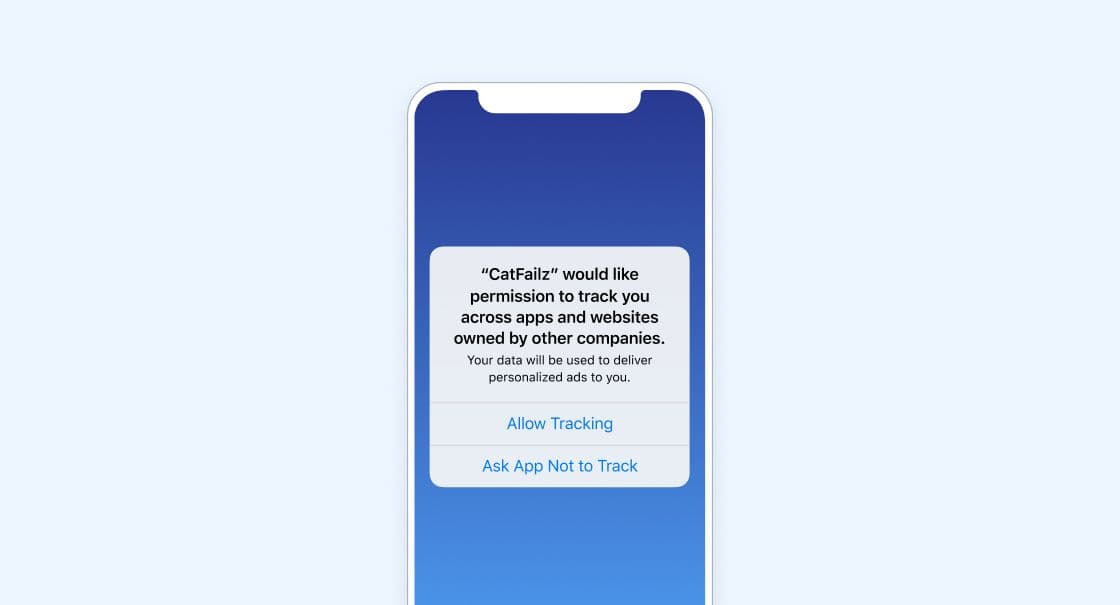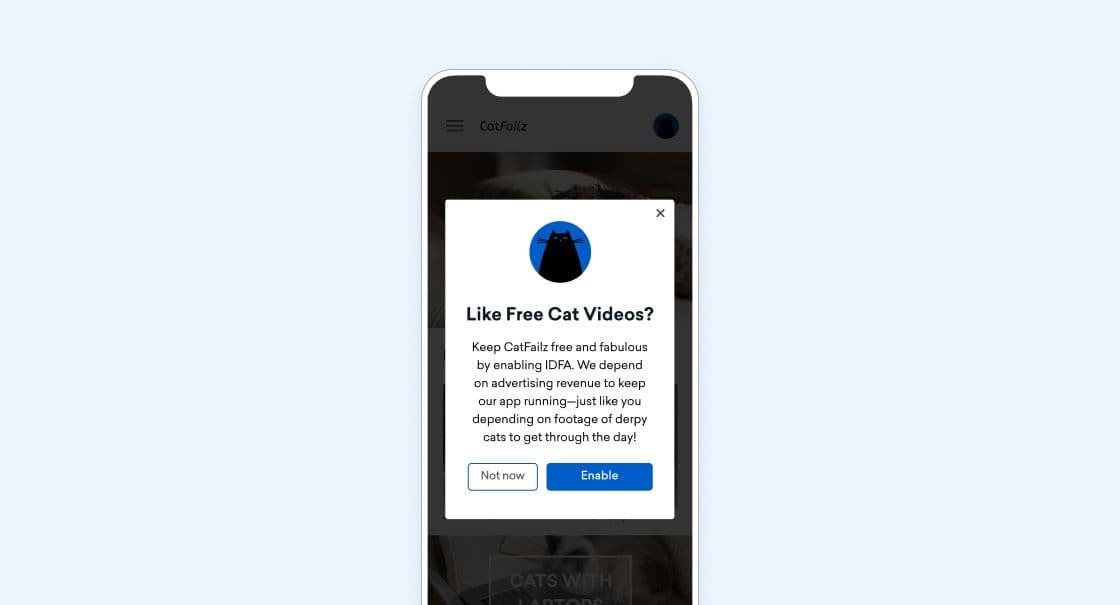End of an Era: What Changes to Apple’s IDFA Mean for Marketing
Published on September 18, 2020/Last edited on September 18, 2020/10 min read


David Willis
Technical Program Manager, BrazeRelevant, real-time data is the foundation of modern marketing—but that’s not really news at this point. Since the rise of mobile, marketers have gained access to unprecedented amounts of customer information, allowing brands to both serve up timely, personalized advertisements and messages to their users and accurately assess and optimize these marketing campaigns. Powered by these insights, many brands have enjoyed increased margins, stronger user acquisition, and robust retention rates.
But at this year’s virtual version of their Worldwide Developers Conference (WWDC) in June, Apple signaled an unexpected change that has the potential to have a major impact on many brands’ customer targeting efforts—and their marketing strategies as a whole.
What IDFA Is And Why It Matters for Marketers
Apple’s Identifier for Advertisers (IDFA), launched back in 2012, is a random user identifier assigned to each user’s iOS device. The IDFA makes it possible for digital ad networks—such as Facebook and Google—to track the behavior of iOS users across a massive ecosystem of websites and mobile apps, making it possible for these networks to access individualized data insights that power the targeted ads that all of us see every day.
For brands using these ad networks to reach their customers, the personalized ads that they can serve up by leveraging IDFA translates into more user clicks, higher conversions, and stronger campaign performance. The upshot? Without the IDFA, these ads would be significantly less personalized and relevant, likely weakening their performance and making this kind of advertising less lucrative for both ad networks and the marketers who rely on them. In addition, the IDFA is leveraged by numerous attribution providers to help marketers understand the impact of their ad spend across various different ad networks, a clarity that will likely be significantly undermined by these changes.
What’s Changing with IDFA
At WWDC, Apple announced a major change in the way that brands gain access to their users’ IDFAs, potentially complicating existing marketing campaigns dependent on this key identifier. While brands were previously able to access a given phone or tablet’s IDFA after that user installed and launched their app without permission, that laissez faire approach is being swapped out for a new process that’s more focused on transparency and user privacy.
Under this new change—which was originally planned for this fall before Apple announced it would begin enforcement in early 2021 in response to widespread backlash—mobile apps on iOS 14 will be required to explicitly ask users for permission before they can gain access. Much like existing prompts on iOS associated with enabling push notifications or location tracking, the new prompt will be very straightforward, highlighting to users that granting IDFA access will allow the app in question to track their engagement across all apps and websites on iOS. Apps will, however, be able to customize the justification (the small text at the bottom) for accessing the IDFA.

For most users, this shift is likely a welcome change, since it will make it easier for them to achieve transparency, privacy, and individual control when it comes to their personal data. And for Apple, this change helps to buttress perception of iOS as the leading mobile operating system when it comes to security, privacy, and transparency. (It may also signal the company’s interest in shaking up today’s advertising landscape; after all, Apple provides an API—called the SKAdNetwork—which can provide an alternative to much of the value currently provided by ad networks and attribution platforms.)
What the IDFA Changes Mean for Marketers
A lot of the discussion around this year’s updates to the IDFA have painted the changes as Apple “killing” the identifier. And while that’s not technically accurate, the reality is that business will not continue as usual. Many consumers are put off by the ad experiences that ad networks and brands have made possible using IDFAs, finding them unsettling, unwanted, and even creepy. The upshot? With some thought leaders suggesting that IDFA opt-in rates could be as low as 5%, brands that currently rely on this identifier to power significant parts of their customer engagement strategy are facing the need to make major strategic shifts in a short amount of time, all in the midst of a challenging, fast-moving marketing landscape.
For some brands, that challenge is an existential one. Companies that rely on advertising revenue to shore up their bottom lines are finding themselves under the gun, forced to come up with creative strategies to maintain access to IDFAs if they want to remain visible. For free apps in the news, gaming, or TV-streaming spaces that depend on IDFA-related advertising, that may mean making a “priming for push”-style argument to customers about the value that they’ll see if they opt in; in fact, we’re already starting to see some brands taking that approach. But for other brands, the way this will impact their strategy—and what steps they’ll need to take to respond—has a lot to do with the way they’re currently leveraging IDFAs.

In general, modern brands tend to split their digital marketing efforts into two overarching categories: User acquisition and user engagement/retention. For many companies, their user acquisition strategies depend on paying ad networks to strategically place personalized ads on websites and in other mobile apps; in the mobile era, these ads have historically been a significant source of app installs and new user purchases. On the other hand, most user engagement/retention strategies tend to focus on using digital messaging (think emails, push notifications, etc.) to reach, engage, and retain a company’s existing users—that is, individuals who have already installed your app, set up an account, or made a previous purchase.
For that reason, Apple’s change to IDFAs is poised to have a significant impact on many brands’ user acquisition initiatives while leaving their user engagement and retention efforts largely untouched. That said, let’s dig a little deeper into those expected outcomes and how brands can effectively prepare.
1. User Acquisition
To be blunt, the new rules around IDFA access are expected to upend brands’ current user acquisition strategies, at least when it comes to the iOS space. Already, we’ve seen Facebook announce that their ad network would likely stop supporting the IDFA; that shift alone promises to significantly complicate existing efforts by brands to serve up effective, personalized ads on iOS devices.
Given these changes, marketers currently leveraging IDFA in this manner should expect to see declines—potentially significant ones—in their acquisition numbers in relation to their iOS ad spend across all ad networks. There’s also the potential for disruption when it comes to the use of install attribution solutions by brands to track the effectiveness of the ad spend when it comes to acquiring new users. Install attribution platforms have historically used IDFAs to identify when ads are responsible for new user app installs or purchases. These providers are starting to pivot to two other methods of tracking install attribution:
- Fingerprint Attribution — Some platforms will use mobile device metadata (e.g. device model, OS version, IP address, etc.) to probabilistically attribute users, continuing to report the ad groups, ad publishers, ad campaigns and source of user installs.
- SKAdNetwork — Some platforms are asking mobile app publishers to forward the information available from Apple’s SKAdnetwork API that will help report on install attribution for up to 100 ad campaigns.
While many of these providers are working to adjust to different methodologies that aren’t reliant on IDFAs, brands should still expect the process of migrating to new solutions to complicate their attribution efforts—and that’s assuming that these solutions aren’t struck down by Apple during the App Store review process.
2. User Engagement and Retention
Thankfully, the sorts of user engagement and retention strategies that marketers generally use to build and maintain relationships with their customers should be largely unaffected—and the same goes for key features within the Braze platform that brands use to power those strategies.
The messaging channels and dynamic segmentation supported by best-in-class customer engagement platforms are generally built on a foundation of first-party data; that is, information on user behavior and preferences that’s sourced from a brand’s own app, website, or physical locations. (A food delivery app, for example, may send timely lunch recommendations at 11:30am based on your previous food choices in the application.) That means that the data collection that makes it possible to engage and retain users with relevant, personalized, and timely messages has little to do with third-party focused identifiers like IDFAs. Braze, for instance, has never automatically collected users’ IDFAs and marketers using Braze generally only do so when they’re planning to use specific Braze features to bridge the gap between their user acquisition and user engagement/retention efforts.
That being said, Braze does have some features that make it possible to connect with Braze Alloys partners in the attribution and ad network spaces. For instance, Braze Alloys partners like Adjust, Appsflyer, and Branch can be used to pass install attribution data to Braze, allowing you to gain a holistic understanding of each user, including whether or not they were acquired via a particular ad campaign, and build targeted audiences based on those insights to reach customers more effectively. In addition, a new feature that allows marketers to connect Braze to Facebook to sync their user data within Braze to Facebook Custom Audiences and then serve up ads based on segments, behavioral triggers, and more. These connections generally depend on IDFA, which means they’re likely to be impacted by Apple’s changes and could become less effective once users are allowed to opt out.
IDFA Changes: How Brands Should Respond
These changes are going to be a significant challenge for a lot of marketers. But that doesn't mean that there’s nothing that can be done. At Braze, we recommend that brands consider putting together a task force or cross-functional team that represents both their marketing organization and their developer teams in order to assess the possible impact of this shift on their business and determine a plan to mitigate it as much as possible. That process should include:
- Identifying which marketing strategies and/or technologies that they leverage are reliant on IDFAs to function properly
- Working with relevant vendors and technology partners that provide functionality related to IDFA in order to fully understand the available options—and review the in-depth analysis and action items that these organizations have already put together
- Prepare for the developer changes associated with iOS 14; at Braze, we’ve already created an iOS 14 beta that brands can use to account for upcoming changes beyond just the IDFA update
For some brands, addressing these changes may be painful—but not as painful as doing nothing. If your app isn’t ready to support iOS 14 by the time the deadline passes, you won’t be able to collect IDFAs from any of your users and any and all IDFA-dependent programs or technologies you may be leveraging to reach your customers will grind to halt, resulting in ad experiences that may come off as frustrating or irrelevant. Don’t let that happen to you. Start planning now so you’re ready to take action before next year rolls around.
Final Thoughts
While Apple’s changes to IDFA have received an enormous amount of attention in the marketing community, it’s just one of the major shifts associated with iOS 14 and Google’s Android 11. Make sure you’re up to speed on what’s coming with our exclusive overview.
Related Tags
Be Absolutely Engaging.™
Sign up for regular updates from Braze.
Related Content
View the Blog
Data-Driven Personalization Heralds a New Era of eCommerce with Braze and Shopify

Ankit Shah

Customer acquisition strategies: What they are, why they matter, and how to master them

Team Braze

How marketing teams can master customer engagement metrics and reporting
